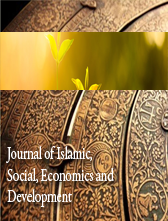THE CONDUCT OF THE ḤAJJ IN MALAYSIA AND ITS ECONOMIC IMPACT ON THE SOCIETY: 1963-2005
Abstract
Ḥajj, the annual pilgrimage to Makkah is the fifth and last fundamental pillar of Islam and is mandatory for Muslims who are physically and financially able to make the pilgrimage. Therefore, the ḥajj is closely associated with economic system as it is a prerequisite in fulfilling the ḥajj. The ḥajj institution in Malaysia under the direction of Lembaga Tabung Haji, particularly from 1963 to 2005, contributed to a series of developments and progress of the nation’s economy. With the progress made in the pilgrimage management particularly during the period, the ḥajj institution under the direction of Tabung Haji has experienced rapid expansion and reforms thus had direct economic implications on the pilgrims and the ḥajj institution itself. This paper highlights the conduct of ḥajj from Malaysia with special reference to the roles of Tabung Haji and the ḥajj that have caused in very important economic consequences for all aspects of the pilgrims and pilgrimage institution itself. The researcher adopts a qualitative method that enables her to analyze and assess the material and information collected from the primary and secondary sources. This study concluded that Tabung Haji had considerably contributed to the significant changes in Malaysian ḥajj institution and led to transformative economic impacts on the ḥajj institution and the community as a whole.













